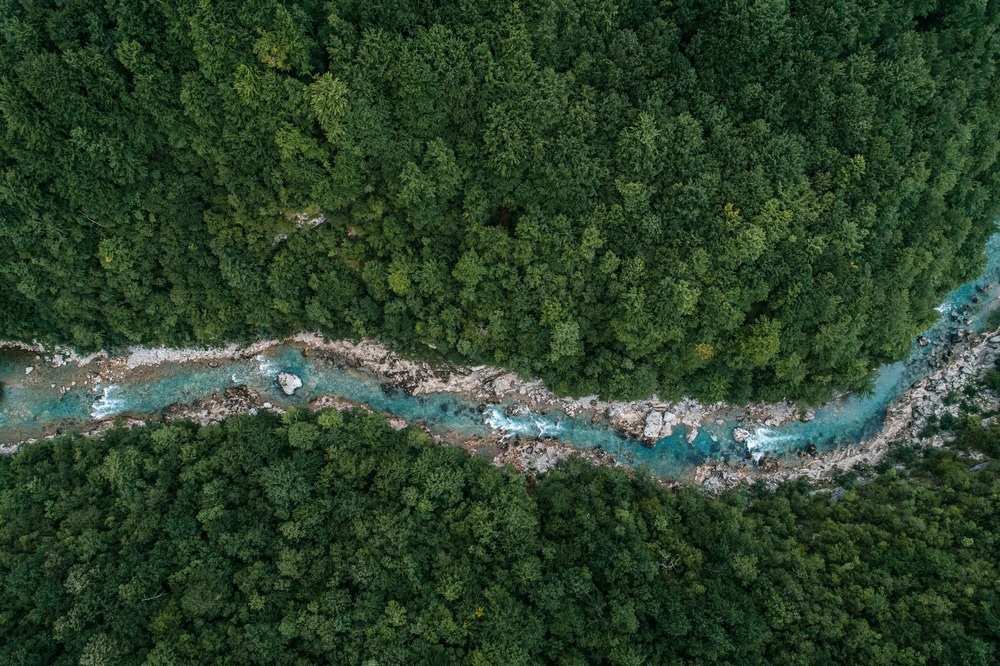A study published in Remote Sensing has designed a reflectance simulator to determine the optimal canopy shape for calculating the shadow fraction based on the reflectance measured by satellite sensors. This is the first time optimal canopy shape is determined for estimating shadow fraction, and this study will improve the future global ground gross (GPP) estimation accuracy.

Study: Modeling Shadow with Voxel-Based Trees for Sentinel-2 Reflectance Simulation in Tropical Rainforest. Image Credit: GoncharukMaks/Shutterstock.com
Significance of Shadow Fraction in Estimating the Global Ground Gross Primary Production
Tropical forests cover 45% of the world's forests and 34% of worldwide gross primary productivity. However, it is challenging to estimate the gross primary productivity using remote sensing due to forests' complex three-dimensional (3D) structure and cloud contamination.
Geostationary satellites such as GOES and HIMAWARI have made it possible to capture cloud-free images. However, uncertainties persist due to the complex forest structures.
The shadow fraction is an important factor in determining leaf surface conductance, as it influences the net photosynthetic rate and, ultimately, the forest's GPP and light use efficiency (LUE).
Several studies have emphasized the significance of integrating the shadow fraction induced by forest structure in LUE models. Still, limited efforts have made it difficult to use on a broader scale.
Methods to Estimate the Shadow Fraction
Virtual forests estimate the shadow fraction without 3D data. The estimation of diurnal shadows is another benefit of utilizing virtual forests. A virtual forest is often used to derive an equation that connects the physical quantity of a forest to the reflectance measured by a satellite sensor.
Canopy shape is a significant factor in determining shadow fraction. Cones and ellipsoids are employed to illustrate the canopy morphologies of coniferous forests and broadleaf forests.
However, the canopy shapes of tropical rainforests with different tree species are unknown. Therefore, the optimal canopy shape for virtual woods must be determined to estimate the shadow fraction.
The reflectance measured in the bidirectional reflectance distribution function is significantly affected by the shadow fraction produced by the forest surface. Therefore, it is anticipated that the virtual forest with the lowest reflectance simulation error would be able to predict the shadow fraction of the actual forest.
Determining Optimal Canopy Shape for Shadow Estimation
The aim of this study was to create a reflectance simulator and determine the optimal canopy shape for calculating the shadow fraction using satellite sensor reflectance as a constraint.
The target is an evergreen tropical forest, making up 58% of tropical forests. Initially, the impacts of canopy shape on reflectance simulation were examined using virtual forests with varied canopy shapes. This finding was validated using Tukey's significant difference test.
The optimal canopy shape was found by comparing the atmospheric reflectance from Sentinel-2 to those simulated from virtual forests. Finally, the optimal canopy shape's performance on shadow fraction estimate was examined.
An unmanned aerial vehicle (UAV) was employed to acquire parameters other than the canopy shape and validate the estimated shadow fraction.
Important Findings of the Study
The half ellipsoid gave the best results, with the lowest root mean square error (0.0385) for reflectance simulation. This canopy shape provided the most accurate estimates of the shadow fraction.
The half ellipsoid showed a lower reflectance than the ellipsoid, suggesting the impact of shadows created by the rounded bottom section of the canopy. The reflectance of the inverted half ellipsoids and the cylinders with flat canopy tops was similar.
The influence of canopy shape was insignificant when the sun zenith angle was 10o, but it increased as this angle increased. In addition, there were noticeable variations in canopy shapes at Sun zenith angles greater than 20°.
For future estimations to be more precise, it will be essential to decrease the uncertainty induced by phenology, simulation models, and the development of virtual forests.
Limitations of the Proposed Study
Applying this study to forests with notable phenological fluctuation will be challenging due to the possibility that forest phenology might alter the shadow fraction and reflectance simulation estimation.
There are uncertainties in the design of virtual forests. The virtual forest was created using allometric equations, and the canopy's development was presumed to be orthotropic. However, canopy shyness plays a significant role in canopy closure. Therefore, there could be variations between the virtual and actual forested landscapes.
Future Works
The proposed method can be applied to the boreal forest. However, boreal forests are sensitive to climate change and have asymmetrical canopy shapes. As a result, it is crucial to enhance canopy-level shadow and reflectance simulators (CSRS) precision by considering the asymmetric canopy form, which will be more sensitive to real forests and contribute to the precise estimation of the shadow fraction.
Reference
Fujiwara, T., & Takeuchi, W. (2022). Modeling Shadow with Voxel-Based Trees for Sentinel-2 Reflectance Simulation in Tropical Rainforest. Remote Sensing. https://www.mdpi.com/2072-4292/14/16/4088
Disclaimer: The views expressed here are those of the author expressed in their private capacity and do not necessarily represent the views of AZoM.com Limited T/A AZoNetwork the owner and operator of this website. This disclaimer forms part of the Terms and conditions of use of this website.